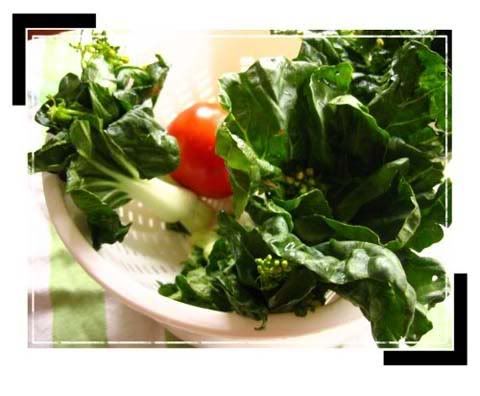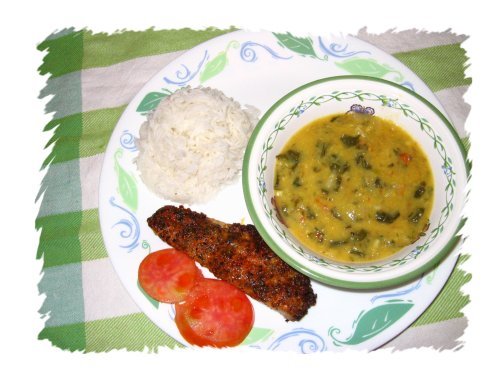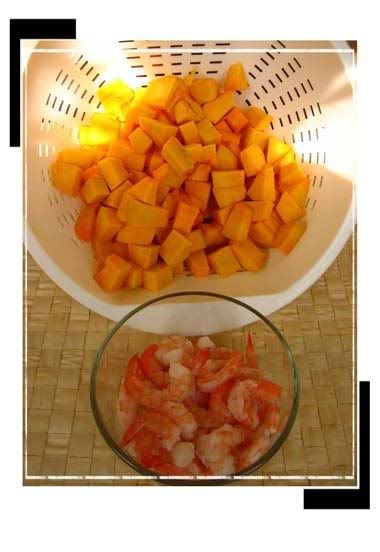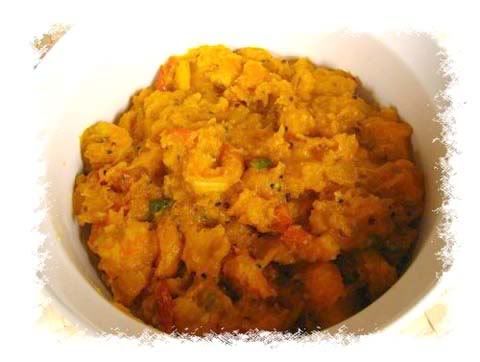Chingri Malaikari | Prawn Malaikari
Chingri Malaikari or Prawn Malaikari , is a very famous and popular Bengali dish, made with prawns simmered in a spicy coconut gravy, served with white Rice or Pulao for lunch or dinner on special occasions. It used to be one of those dishes reserved only for grand affairs like birthdays or weddings. Prawns, specially the big Golda Chingri(ideal for this dish) was an expensive affair. Now however we make Malaikari with even the jumbo prawns, much smaller in size than the Golda.
Jump To RecipeNote: This post is updated in 2022, almost 16 years after I first posted in 2006. Can you imagine what a dinosaur this blog is ? I probably learned to make this Malaikari sometime around that time(early 2000) and hence posted. In those days, blogging was in its nascent and peak stage; iPhone was still in Jobs' brain and no one was thinking of Android; YouTube had just been founded and cooking videos were a far off dream; there were food shows on the telly but the ones from India weren't keen on measures or regional cuisine; and malalikaari was still a dish reserved for grand occasions in Bengal !! This post is one of the most popular ones in my blog and has views > 500K. Now Chingri Malaikari has become more of a common item, cooked often, dressed up better and with hundreds of videos on YouTube. This post though still remains close to my heart and has the best results <3
I am updating this post with better photos. The recipe still remains the same. I just added a trick to make the prawns look straighter instead of curled as that seems to be the new fad.
I am updating this post with better photos. The recipe still remains the same. I just added a trick to make the prawns look straighter instead of curled as that seems to be the new fad.
Chingri Malaikari or Prawn Malaikari (no relation to our dear Malaika at all), is a very famous and popular Bengali entrée served with white Rice or Pulao for lunch or dinner on special occasions. I saw it described somewhere as an “Elegant Bengali Classic” – that definitely sums up this dish. It is so delicious that I want to run down and have my dinner right now instead of writing this up.
I made it this Sunday as a pre-B’day treat for my husband and this write up is for Chandrika of Akshyapatra who said she would like to have the recipe of a certain prawn recipe she had at her Bong friend’s place and which I guessed to be the infamous Chingri Malaikari.
So most people think that coconut or coconut milk is not a popular ingredient in Bengali cooking, but it is in many of the special Bengali cuisines. This particular dish is cooked in a spiced up gravy of coconut milk and involved a lot of hard work for my Ma back in India. Since life & it’s commodities in India was not universally canned or processed back then, she had to press the grated coconut to extract the sweet white coconut milk.
Here in the US, life is much easy and you just pick a can of coconut milk off the shelf of your grocery store. I guess this and the abundance of prawns, is also a reason why you would find Prawn Malaikari a part of the menu in most Bong parties in the US.
To get the best tasting Malaikari, get a mix of large prawns with heads on and rest heads removed. The reason for this being the prawns head being very very tasty adds a fourth dimension to this already delicious preparation. However if you are not very familiar around prawns, I would suggest you get only the ones with no head , as the prawn head has to be delicately cleaned.
If you want to though, go through the following steps to clean fresh prawn :-
Remove the hard shell, do not remove the tail, leave it on
De-vein the prawn, slit the back a little and take out the black thread thingy
For shrimps with heads, carefully remove only the front portion of the head the eyes etc., do not remove the entire head, you want to keep the liquidy thing inside the head.














